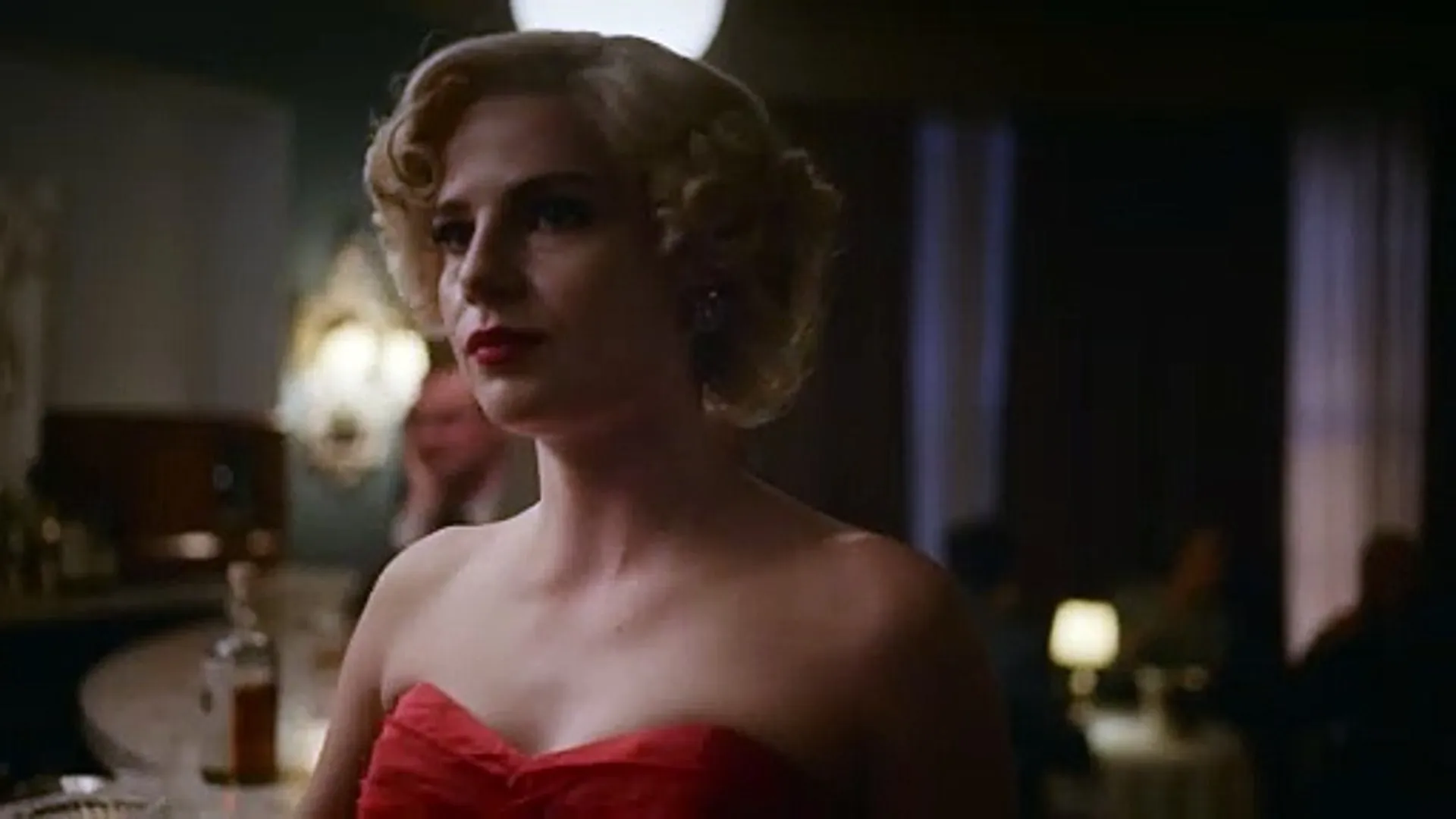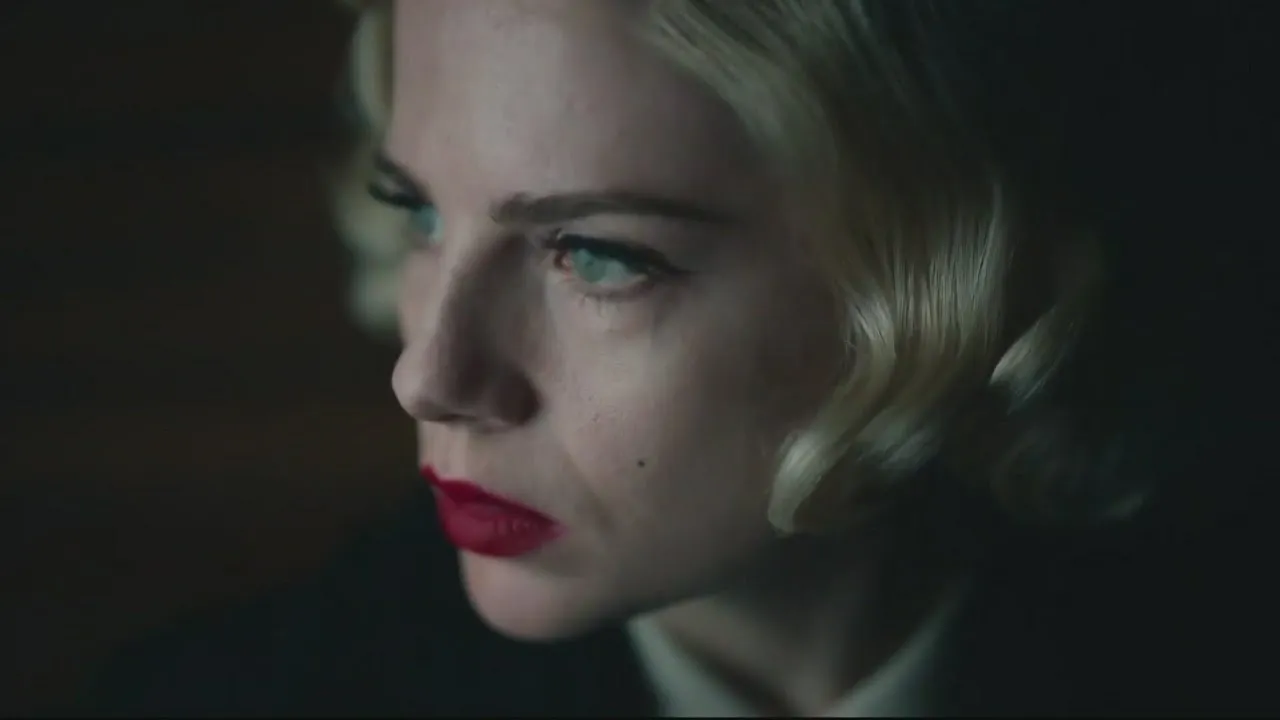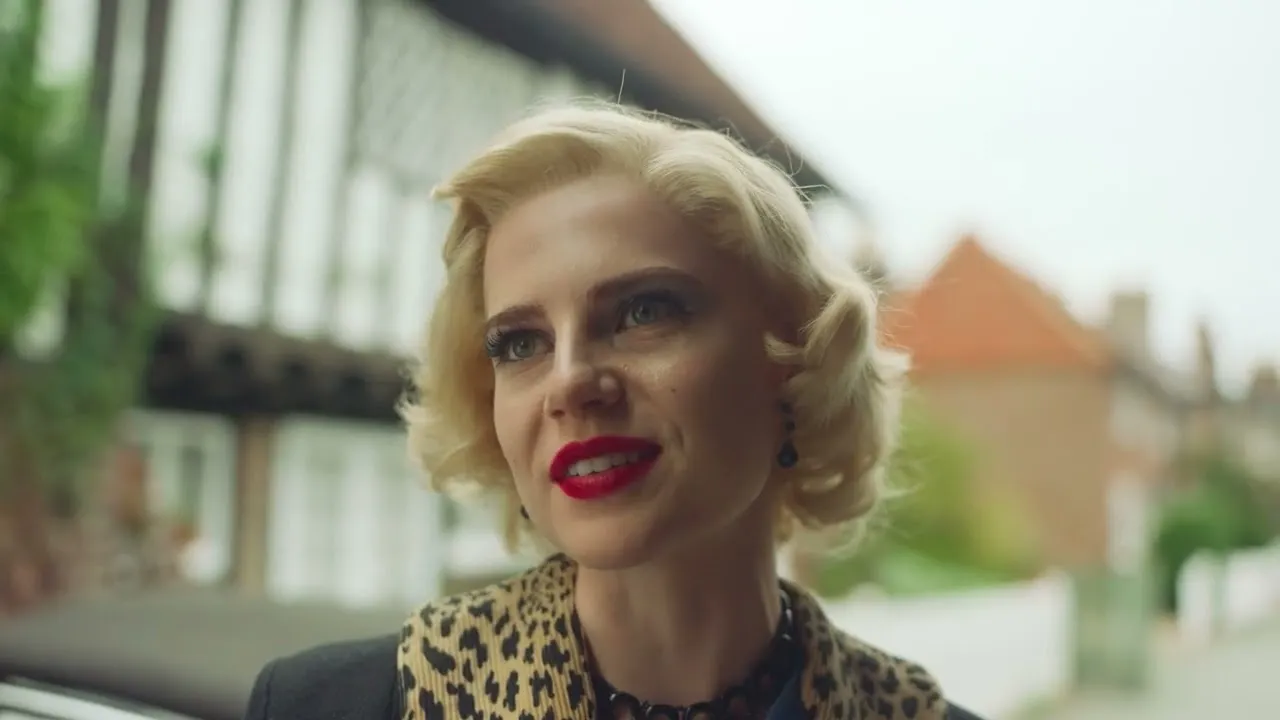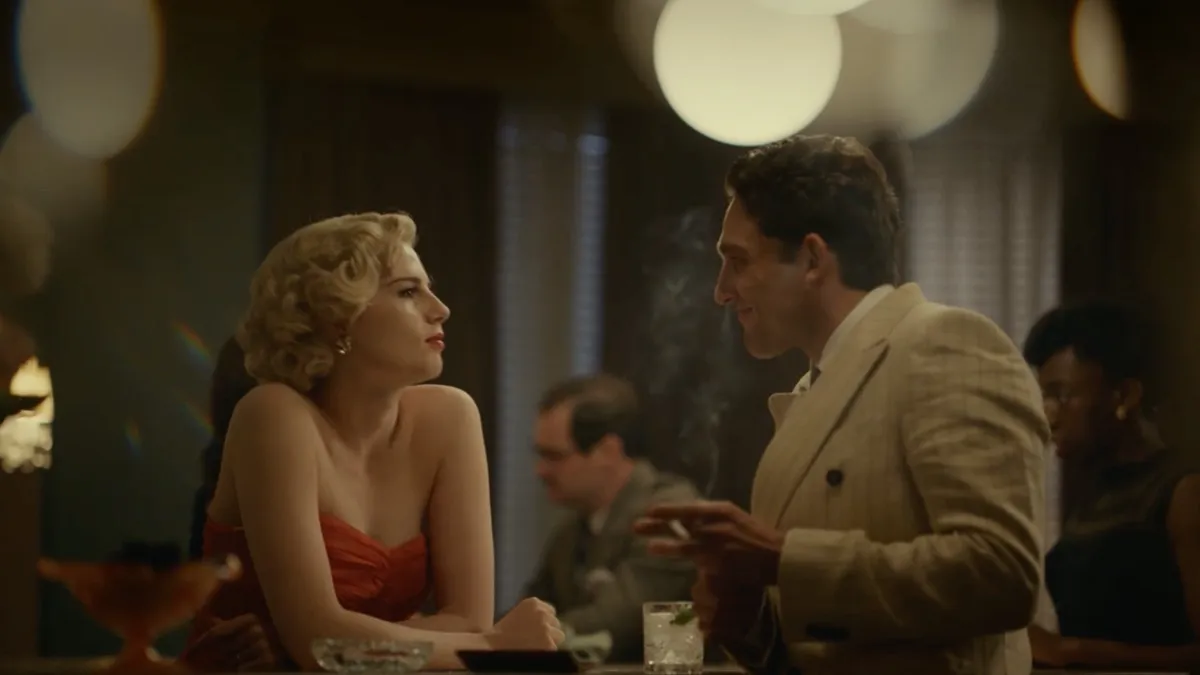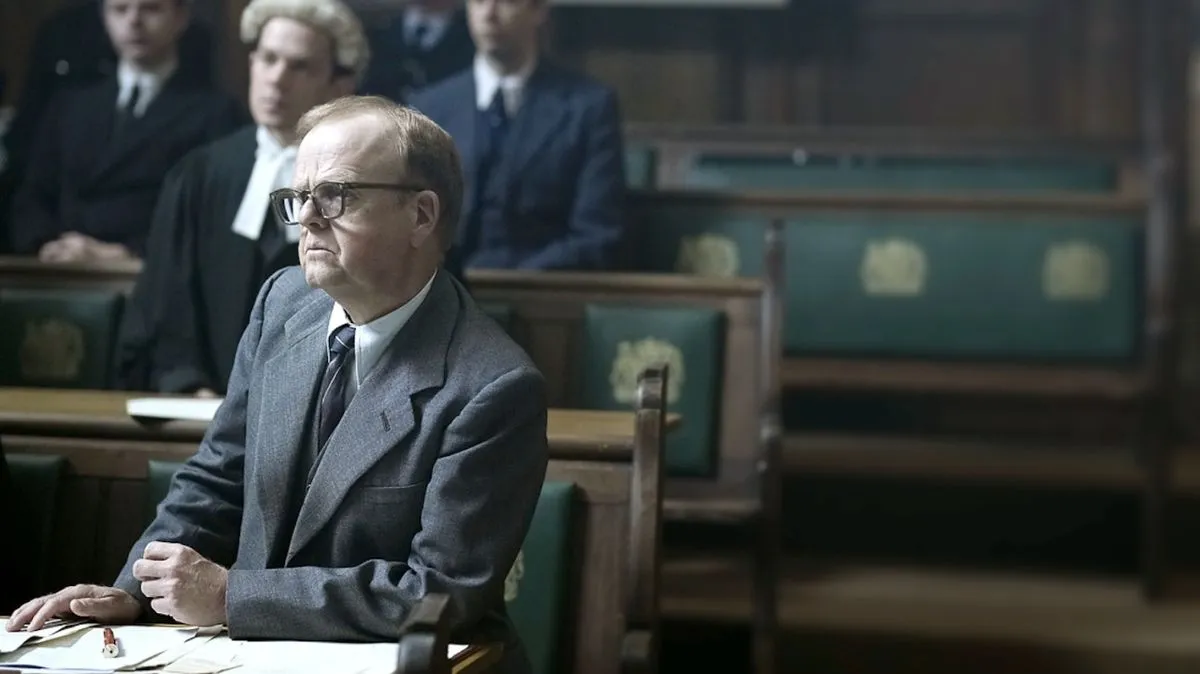In this series, we meet Ruth Ellis—a character whose life teeters on the precipice of ambition and societal scorn—and witness her last hours before facing the gallows. The narrative roots itself in actual events, drawing from Carol Anne Lee’s biography, and paints a picture of a woman who found herself ensnared by the machinations of a society quick to judge.
Her story unfolds with a sharp focus on the final act of her existence: a trial so swift it seems almost rehearsed, and an execution that echoes through history.
The setting is 1950s London, a city still reeling from the shocks of a global conflict, where every street corner whispers secrets of a time when harsh punishments were meted out without hesitation. The customs and laws of that era offered little refuge to those who dared to break from the expected mold (a fact that might raise an amused eyebrow in today’s more forgiving times).
At its core, the series presents a woman caught between her drive to carve out an independent life and the relentless pressures of abuse and condemnation. The narrative unfolds in a non-linear fashion, presenting fragmented snapshots of her past and final moments, a technique that keeps the audience perennially on edge.
Temporal Fractures and Narrative Tensions
The series builds its story like scattered memory fragments, abandoning linear storytelling to reflect Ruth’s internal disorder. Flashbacks interrupt the present, creating a deliberate disorientation that challenges traditional narrative structure.
Scenes of her trial and final moments blend with memories of her passionate, ill-fated relationship with David. This fragmented approach creates a complex portrait where each time segment reveals the weight of destiny and lost potential.
The narrative centers on critical moments—a shocking sequence designed to provoke emotional response. Ruth’s arrest on Easter Sunday 1955 carries deep symbolic weight, transforming a day of renewal into one of ultimate finality. The trial unfolds with clinical precision, blending judicial coldness with personal emotional devastation. Interrogation scenes use sparse dialogue, capturing both institutional indifference and personal tragedy.
Narrative momentum pulses with relentless energy. Each scene vibrates with urgency, tension escalating as glimpses of Ruth’s rich life collide with her approaching execution. Brief moments of hope flicker momentarily before darkness extinguishes them. The story’s tempo becomes a metaphor for human existence—brief sparks of light consumed by inevitable darkness.
Visages of Vulnerability and Vehemence
Lucy Boynton embodies Ruth Ellis with a striking combination of fierce determination and delicate vulnerability. Her performance reveals Ruth as a woman of intense contradiction—her ambition intertwined with deep emotional wounds.
Bleached blonde curls and bold red lipstick become a visual statement of her complex inner world. Boynton transforms the character into a living paradox—radiating strength while revealing raw emotional fragility.
Laurie Davidson portrays David Blakely with a magnetic complexity. His charm carries an unsettling edge that makes his abusive behavior disturbingly credible. The character exists as a powerful force driving Ruth’s tragic trajectory. Toby Jones brings John Bickford to life with nuanced ambiguity, balancing between legal professional and conflicted moral observer. His performance adds sharp realism to emotionally charged scenes.
Mark Stanley’s Desmond Cussen shifts from seemingly gentle suitor to a manipulative presence. His character arc traces a subtle transformation from benign observer to instrument of betrayal—a journey that provokes uncomfortable recognition.
Character interactions create a complex web of emotional tension. Their exchanges pulse with unspoken power dynamics, revealing deeper social tensions. Each interaction becomes a window into the intricate emotional landscape of human relationships.
Power and Punishment: Social Underpinnings
The series reveals the brutal mechanics of abuse in Ruth’s relationships. It depicts domestic violence with unflinching clarity—her interactions with individuals who shift between seduction and cruelty become a reflection of a society that silences women’s suffering.
Ruth’s personal anguish exposes a historical pattern of oppression, where weakness is exploited by those wielding power. The narrative treats emotional pain as a core element of human interaction.
The rigid social structure of 1950s Britain shadows Ruth’s entire existence. Class boundaries that condemn unconventional career paths and criticize single motherhood restrict her potential. Her struggles transcend personal experience, representing the collective experience of women trapped by societal expectations. The portrayal of social norms strips away romantic illusions—exposing how past restrictions dictated women’s destinies.
Ruth’s search for self-determination emerges as a complex emotional landscape. She embodies both vulnerability and fierce resistance against a patriarchal system. Her defiance, expressed through calculated appearance and unyielding spirit, challenges the era’s restrictive social script.
The legal system’s trial process becomes a critical examination of institutional cruelty. Judicial procedures that prioritize speed over human complexity reveal deep structural biases. The series interrogates a system that reduces individual experience to swift punishment, challenging viewers to recognize how societal conformity crushes human compassion.
Frames of a Bygone Era
The director skillfully intertwines multiple timelines, creating a palpable sense of urgency. Narrative structure shifts between Ruth’s final moments and her turbulent past—like viewing a fractured reflection where each fragment reveals a different emotional truth. Brisk, relentless pacing heightens emotional intensity and the weight of approaching destiny.
Visual recreation of 1950s London emerges with striking authenticity. Camera work captures muted colors and stark contrasts of a city emerging from war’s shadow. Lighting transforms each scene, rendering street moments pregnant with unspoken emotional weight.
Costume and set design craft character identities with remarkable precision. Ruth’s carefully selected clothing—a silk blouse and bold red lipstick—becomes a visual statement of resistance and elegance. Environments ranging from tight back alleys to luxurious spaces root the story in a complex historical landscape, revealing layers of social tension beneath polished surfaces.
Historical Shadows and Feminist Rebellion
Ruth Ellis remains one of Britain’s most provocative figures—a woman whose trial shook an inflexible legal system. Her execution is portrayed as a turning point in a period marked by harsh judicial practices. The series brings into focus an era where swift trials and immediate punishment left little room for compassion (a reminder of past legal severity).
Her story is set against the backdrop of an England clinging to strict penal measures and outdated social mores. The portrayal of her case exposes a system that punished deviation from established norms with relentless finality.
Ruth’s life has been remembered as a spark that challenged the expected roles of women. Her personal defiance stirred debates on justice and gender equality that continue to echo in modern discourse. The narrative invites viewers to consider how historical practices have molded current societal debates, urging reflection on the evolution of legal and cultural values.
Echoes of Justice and Society’s Reckoning
“A Cruel Love: The Ruth Ellis Story” explores one woman’s tragic trajectory, intertwined with social tensions of her time. The series shifts between Ruth’s trial, execution, and the turbulent relationships that defined her life. These narrative threads create a portrait of individual struggle against institutional oppression.
The story probes the boundaries of human compassion and societal judgment. Ruth’s experience becomes a powerful symbol of how cultures punish individuals who resist prescribed social roles. Her execution represents the brutal mechanisms of a system prioritizing control over human understanding.
Ruth Ellis’s narrative sparks deep conversations about violence, legal systems, and gender expectations. By revealing her complex character, the series transforms her story from sensational headline to a nuanced exploration of human vulnerability. The work exposes the intricate ways personal suffering intersects with broader social structures.
The Review
A Cruel Love: The Ruth Ellis Story Season 1
"A Cruel Love: The Ruth Ellis Story" is a gripping, thought-provoking examination of one woman's tragic downfall within a rigid, unforgiving society. With a remarkable performance by Lucy Boynton, the series transcends its true-crime roots, offering a poignant critique of justice, gender, and societal constraints. The multi-layered storytelling and historical context enrich the narrative, making it both an emotional journey and a cultural commentary. It succeeds as both a historical recount and a character study, leaving a lasting impact on its viewers.
PROS
- Strong, nuanced performance by Lucy Boynton as Ruth Ellis.
- Multi-layered narrative that balances personal tragedy with social critique.
- Rich historical context that adds depth to the story.
- Powerful examination of gender, justice, and societal norms.
CONS
- Pacing may feel rushed at times, especially in the courtroom scenes.
- Some viewers might find the non-linear storytelling disorienting.









































